compleckz
New Member
- Joined
- Aug 6, 2007
- Messages
- 1,328
- Reaction score
- 3
- Points
- 0
- Age
- 38
- Location
- Western Mass
- Vehicle Year
- 97
- Engine Size
- 4.0
- Transmission
- Automatic
A FAQ that might be of interest for those contemplating whether to go through with a solid axle swap or not.
This post is simply for informational purposes, it is not intended to discourage those who have a definite need to swap, but rather to assist one in better understanding the causes for the common issues that tend to occur on TTB suspensions.
--------
This post is simply for informational purposes, it is not intended to discourage those who have a definite need to swap, but rather to assist one in better understanding the causes for the common issues that tend to occur on TTB suspensions.
--------
Originally posted by 4x4junkie
Ford's TTB (Twin Traction Beam) is probably one of the most hated, yet widely misunderstood suspensions ever to be invented. Virtually any offroad trail you go on, it seems like someone will always be around somewhere with multiple reasons as to why it's so crappy, and that you should just get rid of it.
Perhaps even you yourself have struggled with some aspect of it, and thought that nothing could be done about it except to swap the entire axle & suspension out for a solid beam axle, who's offroad capabilities are rarely ever disputed.
But just how bad are these problems? Are they just a normal trait of this suspension that nothing at all can be done about? Or could there be an underlying issue that's causing the problem? (that is if it's even a problem at all. Some of the myths I hear being passed around about these things are not even true).
The purpose of this post is to bust through these myths and help you to understand what the exact causes are for the issues typically seen on this suspension, and an explanation on how to go about fixing them. You may be surprised at how simple some are to fix, and could potentially save you the hassle of having to do an entire axle & suspension swap.
1.
My TTB keeps wearing out my tires too fast (or wears them funny)
This is probably by far the most common complaint on these things, and blame for it is usually (incorrectly) put on the camber curve that's a normal characteristic of the suspension.
The REAL cause is more likely the bumpsteer that's created by the angle that the steering linkage ends up at after installation of a suspension lift. This causes the toe alignment of the front wheels to change quite drastically as the suspension moves, and will easily wear out a tire 10x faster than any changes in camber would.
It's unfortunate nearly the entire suspension lift industry has done such a poor job when it comes to steering corrections on these things. The drop pitman arms normally provided with most kits consistently come up way too short, which fails to restore the steering to it's proper geometry (and is why this issue occurs so often).
Fortunately there are fixes available for this (one of which is a mere pitman arm swap that can take as little as 30 minutes to do if you have the right tools).
This page goes into greater depth about understanding how the steering works on a TTB, and gives some suggestions for correcting this all-too-common issue.
___________________________
2.
OK, so what if my steering angle is fine? I've taken this @$&#!! thing into the shop 6 times and they say that the problem is "normal"??
Well, this is absolutely NOT normal at all! These things certainly didn't roll off the dealer lots out of alignment, so something is certainly wrong under there.
Liftkit design is again largely to blame here, as this again occurs far more often after a lift has been installed.
The TTB suspension has a fairly narrow range that the ride height must be within in order to facilitate an alignment. Yet many of the suspension kits available today are not designed to take into account the weight of the various bodystyles and engines available (Supercab/Reg cab/BroncoII/4cyl/V6/etc.). Obviously a big heavy Supercab will sit lower on the same set of springs than a smaller 4cylinder truck, so this could easily cause an unalignable condition to occur. Fortunately the solution to this issue is probably the easiest one of any.
This page (along with the page above) shows some tips on how to correct the ride height of the suspension so a proper alignment can be performed on it.
A 2nd (probably even more) common reason for this to occur is simple incompetence (or laziness?) on the part of the alignment technician doing the job. The fact that anyone would say a problem is "just normal" screams of this. The 1st page linked above gives some pointers for doing the alignment yourself at home, if you want to avoid that hassle (believe me... it's not rocket science, it's a lot easier than you might think). Otherwise a 4x4 shop or someplace that regularly deals with modified suspensions would probably offer the best chance of finding someone that can do a proper alignment on it.
_____________________________
3.
But a TTB axle will never flex or perform offroad like a straight axle can.
Well, this may be partially true.
TTB lift coils downright suck. They are too stiff to allow any decent flex. You put these same coils on a straight axle and it ain't going to flex at all either.
A simple swap to better coil springs can make all the difference in the world here.
TTB suspensions are easily capable of 18+" of articulation on a Ranger, Explorer or Bronco II with only a minimal amount of modification. While it is possible to exceed this number with a straight axle, how much flex do you actually need in order to have good performance?
Exceeding about 18-20" flex (without also widening the track width) begins to sacrifice the vehicle's handling stability unless you can also greatly lower the vehicle's center-of-gravity. This isn't always easy to do on a vehicle with full (or even trimmed) fenders and large tires.
Lots and lots of flex certainly can make an excellent ramp (poser) truck, but it doesn't always translate the same in terms of trail performance.
.
Here is an example of what a pair of Jeep Cherokee coils (along with extended radius arms) can do for a TTB suspension on a fairly light Bronco II. (nearly 1000 RTI, measured ramp angle 23°) It's not often you would need more flex than this in order to keep all 4 tires on the ground while offroad.

Jeep ZJ (V8) springs (and some XJ springs, such as Rancho #RS608 or Skyjacker #JC30F and #JC60F) usually have a rating of around 240PPI (pounds-per-inch), whereas standard TTB lift coils are often closer to 450PPI. It's little wonder why they don't flex for s**t.
(Some additional info on the Bronco II XJ/ZJ coil swap can be found here).
4-door Explorers, and Ranger Supercabs will require a bit stiffer coil in the 275-325PPI range due to being heavier. Some early ('66-'77) Bronco coils fall within this range. There are a few companies out there that can custom-make a pair of coils for you as well, if needed (National Spring Co., for example).
Linear-rate coils are best here, avoid variable or "progressive" rate coils, they won't allow the wheel to flex upward as well.
You'll also find that softer springs will have a much longer free length for a given lift height than stiff coils. This helps the suspension to flex down further to better keep the tires in contact with the ground for traction.
The other thing to check is your shock length. Often times they're too short, which can cut off a good portion of your flex. An explanation for how to check for shock length can be found in the link in section #2 above.
Extended shock mounts can be added to increase the available travel as well.
It should also go without saying, ditch the swaybar if it's still on there.
___________________________________
4.
But isn't a TTB axle weaker than a straight axle?
Well, it depends on which specific axles you are comparing.
The TTB Dana35 axle used in most '90-'97 trucks shares many major components with the Dana44 axles found under fullsize trucks (such as the 5-297X axleshaft u-joints) and uses a hi-pinion gearset for added strength.
The overall strength difference between the front D35 and D44 is quite small, as these axle u-joints are normally the 1st failure point on either axle if pushed too hard (the stock D35 locking hubs excepted, read here about better hubs for it).
Some D44s are not even AS strong. The early Bronco D44 with its smaller 5-260X u-joints is a good example.
.
All Rangers/BIIs built prior to 1990 will have a Dana28 front axle. This one probably would make a better door stop than a driveaxle. Its tiny axleshafts just don't lend themselves well to hard offroading, even with stock-size tires.
A D35 axle from a later Ranger/Explorer is basically a bolt-in swap for a D28, and can support running 35x12.50 tires, even with a differential locker. (some info on the 28-to-35 swap here)
_____________________________
5.
But how can an axle thats "broken in the middle" be just as strong?
Well, simply put, the TTB center joint & slip-shaft is normally not subjected to the same operating angles typically seen at the steering knuckle joints. The slip-shaft also has a very large spline diameter (much larger than where the shafts go inside the diff). It's not likely to see a failure here unless the shaft is somehow binding up inside the axle beam.
If you have a lot of flex (like what's shown above), places to check for binding are within the beam "window" that the passengerside shaft passes through, and where the ends of the large radius arm bolts protrude into the passengerside axle beam (this one may be a bit harder to see, check carefully for it).
A bit of work with a grinder can allow a much greater amount of movement if needed.
Shown is a center yoke that has been clearanced for additional droop travel:
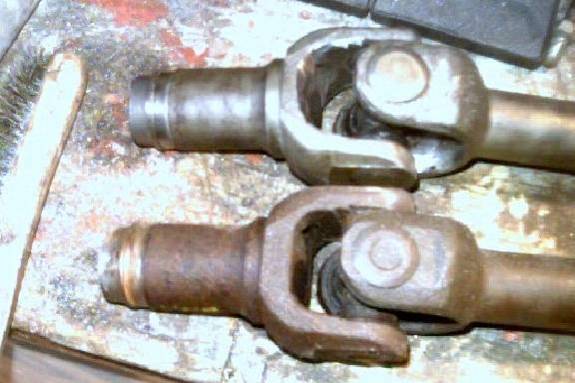
This beam window was widened to allow more movement of the shaft during flex. You can see where it previously was rubbing:
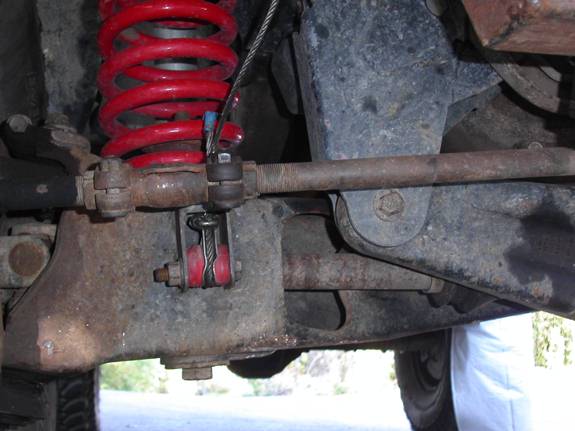
The large axle spline on the RH shaft can also be trimmed about ½-1" shorter with no loss in strength if it should bottom out in the yoke when both wheels are at full droop.
_____________________________
6.
But TTB is still IFS. IFS sucks offroad
This is probably one of the more blatant misconceptions around.
IFS (Independent Front Suspension) as a whole has gotten much of it's bad rap from the lack of flex and durability inherent in most of the conventional A-arm w/ torsionbar setups found in late-model vehicles. The TTB's components simply do not compare (for one thing, there are no CV joints on it).
Another common argument is that the leverage inherent in a straightaxle helps force one tire downward for better traction when the opposite tire is forced up (while climbing a rock, for example). While this is true, it's not near as significant as commonly thought to be. The downforce created at that wheel is mostly offset by the lifting action occurring at the wheel that's climbing up the rock.
An independent (TTB) suspension is capable of maintaining downward pressure at the opposite wheel through use of the longer, more flexible springs described above (#3). This allows the wheel climbing to move upward easier (reducing the amount the body lifts up), which in turn helps the opposite spring keep more downward pressure at the other tire for a similar gain in traction. Short, stiff springs simply cannot do this well.
Because a TTB is relying more heavily on the springs for this function, coil selection does become more important than on a straightaxle.
One area TTB will easily outshine a straight axle: soaking up the bumps while traveling at higher speeds. The TTB has a lower amount of mass (unsprung weight) that moves with the suspension than a straight axle, allowing the tires to follow the ground better (and is why they remain much more popular with desert racers than straight axles).
______________________________
7.
OK, but all that wildly changing camber still causes it to handle like crap.
How sure are you that the camber is what's causing the poor handling, and not bumpsteer from a screwed-up steering linkage?
Referring back up to #1 above, a poor steering setup that's unable to properly control the wheels is going to cause far more handling issues than the camber.
(it seems like it's impossible to stress this one enough. The VAST MAJORITY of handling problems on a TTB can be traced back to IMPROPER STEERING LINKAGE ANGLES on a lifted vehicle).
Camber by itself has comparatively very little effect on handling, but if desired, it can be further controlled through use of a limiting cable or strap run over the frame, connected to both sides of the axle. This will reduce the suspension's 'unloading' while climbing up steep hills for example, but will still allow complete full articulation (same function as the 'center limit strap' as sometimes used on a straight axle). An even bigger reason for something like this is to keep the hood from rising up as much on a hill, allowing greater visibility over it, together with keeping your CoG from being thrown toward the rear as much. The need for something like this is reduced with longer wheelbase however.
(some discussion on mounting a 'center limit cable' can be found here)
___________________________
8.
But won't all this stuff clean out my bank account?
Not at all. Doing the SAS is far more likely to put a bigger dent in your funds, even if you get the axle for $50 (or even FREE).
It must be remembered that things like regearing the new axle will add up very quick. Then there's the cost of buying a new locker for it all over again, too.
Most axles that cheap are likely going to need a lot of rebuilding as well (new balljoints, new bearings, new u-joints, and so on). Then there's still going to be dealing with the steering... new tierods and ends, draglink, etc... All that's very likely to exceed the typical cost of what you'd pay for a pair of new coils and/or steering for your TTB.
It's common for one to focus in on the highly-modified TTB suspensions commonly seen on desert race (or Prerunner) trucks. Such costly, hi-end modifications are completely unnecessary unless you like to pretend your truck has wings.
.____________________________________
9.
So what kind of abuse can a TTB take then?
It's capable of standing up to virtually all of the same things you'd normally push a stock D44 straight axle through.
Some have tried to point out the D35 aluminum centersection as a possible weak spot, but a simple skidplate can eliminate any worries there. Reports of D35 case rupture have basically been non-existent on the TTB axle however.
The one area on the axle itself that is arguably weaker than a straightaxle would be the open-channel backside of the TTB arms (cracking right at the end of the welds where the backside opens up has been noted a couple times). Welding a plate in to box them up would easily match (or in some cases exceed) the strength you'd find in the round tube structure of a straight axle.
Bending of the beams is quite rare though. Normally a bent beam happens from some sort of collision, not from heavy offroad use.
A seperate area of concern can be with cheap liftkit brackets. The flimsy brackets in some kits tend to bend or crack with hard use, and may need some reinforcement. Others may interfere with movement of the differential housing. This of course wouldn't be any fault of the TTB though.
This type of failure could easily be compared to bending or cracking of trackbar brackets common to straight axles. Such a failure doesn't deem a straightaxle as inferior either, the liftkit product is what failed.
The Skyjacker and James Duff TTB suspension kits have repeatedly proven themselves to be very durable and are highly regarded for their brackets.
.
____________________________
____________________________
Well, the SAS is still much simpler, as all this TTB stuff is just too complicated for me.
This could potentially depend on who you are more than anything else...
Some minds work better at tinkering with things, whereas others demand a more familiar approach.
A TTB undeniably requires more attention-to-detail while setting one up, mostly due to the fact that the wheel camber is tied in with its ride height, and needs a bit more fine-tuning than would normally be required on a straight axle. The fact that the number of quality aftermarket TTB bolt-on parts remains relatively small often leaves a fair amount of homework to be done as well. As such, it's not going to work for everyone in every case.
But there are plenty of considerations that need to be taken into account with a complete axle swap also (things like caster settings, designing and fabricating all of the needed mounting brackets for it, etc.). You will still need to set up your steering linkage and its angles also. The fact its a one-of swap means nothing will be "factory" anymore, and you'll need to be good at sourcing all the various different parts needed for it.
Is it easier to fix the issues that are present on the setup you already have under your truck? or would it be easier to swap out the whole axle & suspension for something else?
Only you yourself can answer that, but the above information should hopefully be of some help in making the decision.
.
Details of the straight axle swap itself I won't get into here, as such info is pretty easy to come by by searching the forum here (or the internet). This post is simply to shed some light on the TTB axle, and the issues about it that often tend to be exaggerated.
A little bit of knowledge can go a very long way on these things. Without it, only fears will take over.
If anyone has specific questions or needs further info about this, feel free to post (or you can send me a PM, if you prefer). I, and a few others here should be able to answer it.
But please no bashing of suspensions in this thread though. There are other threads for that.
I want this thread to remain useful to those who are still undecided on their swap.
Any unnecessary or irrelevant posts may be removed in an effort to keep this post free of clutter.
B)
Last edited by a moderator:


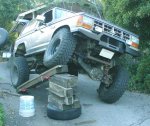
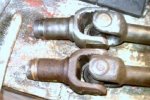
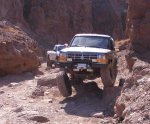
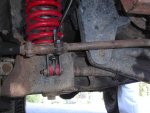
 read it and they might learn something but them you also have the boneheads that think a stright axle is the best thing in the world besides the wheel
read it and they might learn something but them you also have the boneheads that think a stright axle is the best thing in the world besides the wheel















